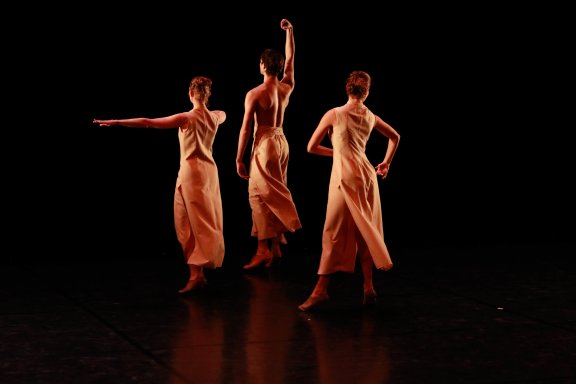18 & 19.11.22
CN D à Pantin
In the Samoan language, Tusitala designates the one who tells stories. This beautiful definition is used by choreographer Marie-Geneviève Massé in a show where she attempts to tell her vision of the baroque. This definition brings together that of dance masters like Louis-Guilaume Pécour and Raoul Feuillet, with that of composers Lully, Gluck or Vivaldi, which she recreates to reinvent her own music of sentiments, after her piece called Les Folies françaises de Couperin. While the actress playing Tusitala will perform the symbolics of colors, five dancers and two musicians will prolong her narrative through gestures and notes. Danced to pre-recorded as well as live music, the baroque and contemporary steps respond by expressing love, cunning or hope. Tusitala is a broad visual and choreographic representation which isn’t limited to the color codes of the past; it associates a vibrant red to the violence of revolutions and mourning black to the modern elegance of a businessman, thus fully illustrating the ambition of its author to connect the forms of the repertory to our present without denaturing them.
Marie-Geneviève Massé learned baroque dance with Francine Lancelot after training in ballet and contemporary dance. She danced with the companies Ris and Danceries, and then joined François Raffinot’s company Barocco, and she also teaches baroque dance in several conservatories and academies. Massé founded the company l’Éventail with Bernard Delattre in 1985, and they created over fifty pieces, among which Les quatre Saisons, and some of Molière’s ballet-comedies like Le Malade imaginaire, Le Mariage forcé and Le Sicilien ou l’amour peintre. In 2000, she was named Chevalier des Arts et des Lettres by the minister of Culture Catherine Tasca.
